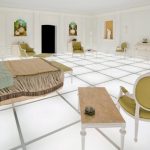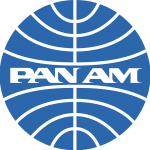Fifty years ago this month in 1968 the United States of America (USA) and the Union of Soviet Socialist Republics (USSR) were locked in a race to reach the moon. The USA had lost three astronauts in a launch pad fire the previous year and the first manned Apollo mission, a short haul up to Earth orbit, was still a half year away. Then from out of the blue came a new futuristic block buster science fiction motion picture, “2001: A Space Odyssey” (2001).
The movie version of 2001 was a collaboration between science fiction writer Arthur C. Clarke (1917-2008) and cinemaphotographer Stanley Kubrick (1928-1999), who directed and produced the film. The screenplay was based on a Clarke short story, “Sentinel.” Given the age of the film I’m not concerned about any “spoilers” in this column. I just want to review some of the highlights of this breakthrough movie.
As futuristic as 2001 was, it maintained a plausible connection to the 1960s with the use of familiar brand names. Interestingly, some of them were out of business before the advent of the new century in 2001. For example, a commercial spacecraft used for shuttling passengers to the orbiting Space Station V had the logo of Pan American World Airways emblazoned on it. Pan Am filed for bankruptcy in 1991.
Then there was the Bell System vision phone, a long distance telephone with a large viewing screen used by one of the characters to phone home from the space station. The monopolistic Bell System was broken up 1984.
|
|
|
Other brand names that appear in the movie still exist today. Aboard Space Station V one sees a registration desk for Hilton as well as the “Howard Johnson’s Earthlight Room,” a lounge area with a breathtaking view looking down from the rotating station.
Space Station V itself was a marvel. It was a dual-ringed rotating space station 1,000 feet in diameter orbiting 200 miles above the Earth. The centrifugal force generated by its rotation provided an artificial form of gravity within its rings.
Likewise, the Discovery 1 spacecraft journeying to Jupiter in the movie also had a large rotating central section, shaped like an enormous tuna can, that provided artificial gravity for its crew – at least those crew members who were not hibernating in suspended animation. The 38-foot-diameter centrifuge was actually a rotating set that allowed the cameras to roll and actors to stroll and jog around its 360 degree outer circumference.
The main characters were scientist Dr. Hayward Floyd, Discovery 1 crew members Dave Bowman and Frank Poole, and the HAL 9000 computer, Hal. With so few characters long dialogs were included in only 40 minutes of the 2 hour 19 minute movie.
One of the wonderful and scientifically accurate innovations of the movie was the absence of sound in a vacuum. After three seasons of the starship Enterprise whooshing about the screen, the silence of 2001 gave the movie a dramatic sense of grandeur. (Unfortunately, science fiction would once more take a giant leap backwards in 1977 with the appalling physics delivered in the movie Star Wars.) The 2001 soundtrack was also enhanced by musical score including Richard Strauss’ “Thus Spoke Zarathustra” and Johann Strauss’ “The Blue Danube” waltz.
Three months after the motion picture was released, Clarke’s novel by the same name saw its first printing. Instead of a movie based on a book, the book was based on the movie screenplay. However, there were major differences between it and the movie, the greatest of which was probably Discovery 1’s planetary target. In the movie it traveled to Jupiter, but in the novel it journeyed all the way to Saturn. At Saturn the final rectangular monolith was on the surface of Saturn’s third largest moon, Iapetus, rather than floating lazily in space as in the movie.
Furthermore, when “2010: Odyssey Two” the sequel novel was published in 1982, the book resumes where the movie, not the previous book, left off – at Jupiter. That was a major disconnect between the 2001 and 2010 novels. Further differences were noticeable when the accompanying motion picture “2010” was released in 1984. Clarke explained the discontinuities with some hand waving and by alluding that the events of all the various novels and movies were occurring in separate universes. Many fans found this explanation difficult to reconcile.
In a rare solute to science fiction, the Smithsonian National Air & Space Museum (NASM) in Washington is commemorating the golden anniversary of 2001 with an exhibit featuring a re-creation of one of the final scenes from 2001 in the “The Barmecide Feast.” According to a NASM, the exhibit features the “fully realized, full-scale reflection of the iconic, neo-classical hotel room from the penultimate scene of Stanley Kubrick’s and Arthur C. Clarke’s landmark film, 2001: A Space Odyssey….conceived by Hong Kong-based British artist Simon Birch, and built with help from Paul Kember of KplusK Associates architectural firm. Two of Kember’s uncles worked as draftsmen on 2001, designing and drawing the painstakingly detailed original set.”
The scene has long been perhaps the most perplexing one in the movie. Kubrick himself described this strange room where astronaut Bowman found himself as “a human zoo approximating a hospital terrestrial environment drawn out of [Bowman’s] own dreams and imagination. In a timeless state his life passes middle age to senescence to death. He is reborn an enhanced being, a ‘star child,’ … and returns to earth prepared for the next leap forward of man’s evolutionary destiny.”
In the movie the fabricated set represents a fake hotel room created for poor Bowman by an unknown intelligence. Now, the NASM is featuring an actual recreation of that fake room. Does that make the exhibit doubly or triply fake?
According to NASM, visitors “will be able to enter the re-created room in small groups for short periods to experience the surreal environment depicted in the film.” If that is the case and people get that close, here’s a list of hotel items from the novel I would like someone to confirm are present, and let me know:
• Bell System vision phone
• Washington, D.C. phone directory filled with blank white pages
• Desk with dummy drawers that do not open
• Working light switches
• A closet with four single-breasted suits with shirts and one dressing gown
• Bathroom with working fixtures
• Kitchenette with electric cooker, sink, refrigerator and cupboards with crockery and cutlery
• Food in the working refrigerator, but no eggs, milk, butter, meat or fruit
• Breathable air
The exhibit at the NASM – Washington is open to the public from April 8 through May 28.



